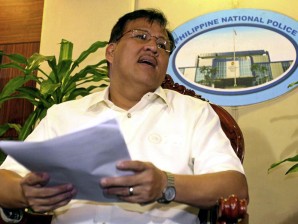Robredo bats for calamity trust fund
With the destruction wrought by back-to-back typhoons, there ought to be a law that will literally put away savings for a rainy day.
Interior Secretary Jesse Robredo on Tuesday said he was backing the establishment of a trust fund for unused calamity funds to enable disaster-stricken provinces, towns and cities to utilize the money in the next storm cycle.
Speaking in a television interview, Robredo observed that “almost all local government units (LGUs) do not use up all their calamity funds, and these are just declared as savings at the end of the year.”
He cited a bill pending in Congress seeking to create a five-year trust fund comprising unused calamity funds, saying the concept was “very good.”
“Not all places go through the same storm or disaster. … If you have no calamity this year, then you set aside the money. It’s like you deposited the money in the bank for the time when you’d need [it],” he said.
Not used for calamity
Under the law, LGUs may tap 5 percent of their internal revenues for a calamity.
Robredo said this meant that of the P300-billion in internal revenue allotment shares of the LGUs, roughly P15 billion, or 5 percent, would be set aside as calamity funds.
“But in practice, that money is used not for the calamity but for the rehabilitation afterward—for damaged roads and bridges, farming programs … That’s not a calamity fund anymore. A calamity fund is quick-response money,” he said.
According to Robredo, calamity funds should primarily be used, first, for the delivery of relief goods such as food, water and clothes, and second, for disaster mitigation and preparedness.
“Which means that these funds must be used to buy things we would need to respond to a calamity, including training of personnel and retrofitting of infrastructures, so we will be able to save more in the long run,” he said.
Robredo said it was “more important” to prepare for a storm to minimize the damage “instead of waiting for the storm to bring damage, and then respond.”
He noted that not all calamities were equal. “The minimum [calamity fund] is 5 percent, so the LGU can appropriate more, depending on its priorities and its capabilities.”
‘Basic minimum’ gear
Robredo said the cost of property losses “is always much more than the amount appropriated for the calamity fund.”
“That’s where the general fund comes in. That’s when we start using money from national agencies. For example, the government, perhaps the Department of Public Works and Highways, will shoulder the damage to infrastructure, and so on,” he said.
Robredo said his department was preparing to issue a circular directing LGUs to ensure that they had at least the “basic minimum” rescue and response equipment.
He said he no longer wanted to hear the excuse that a town, city or barangay did not have rubber boats, light vests and other equipment.
“We hope to standardize the minimum equipment required in a disaster,” he said.
Originally posted: 6:59 pm | Tuesday, October 11th, 2011
